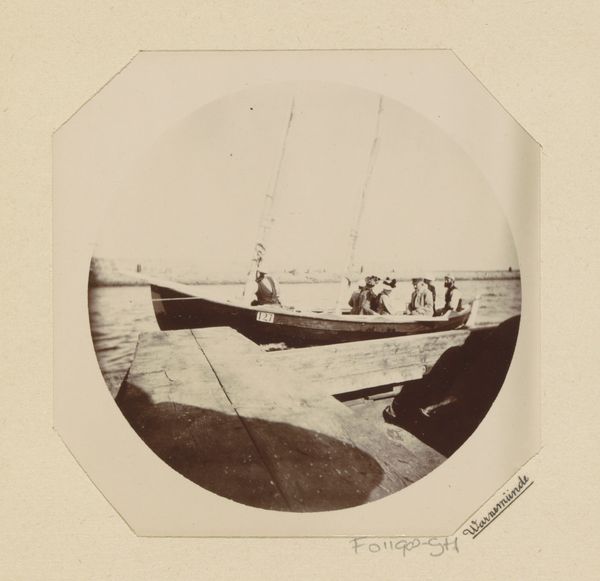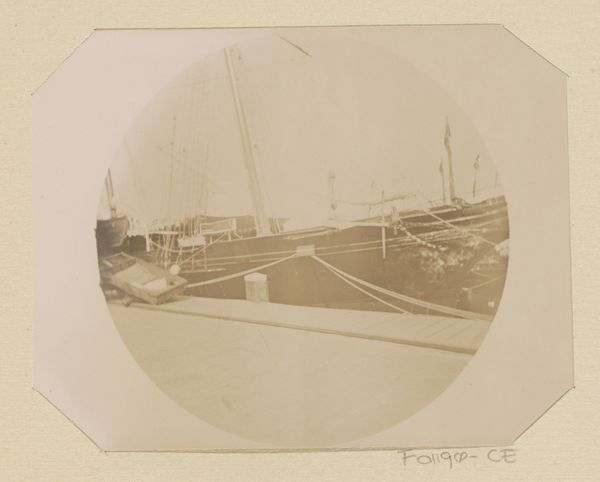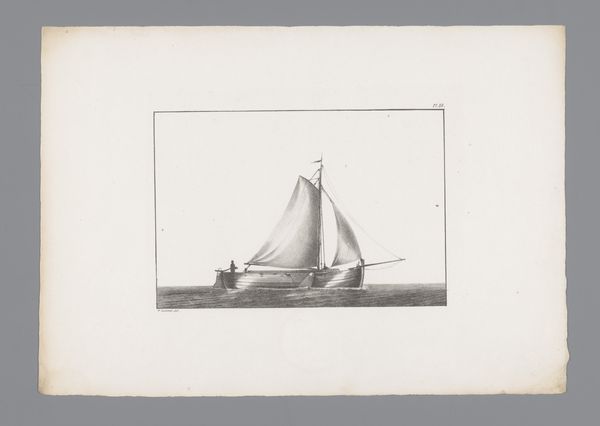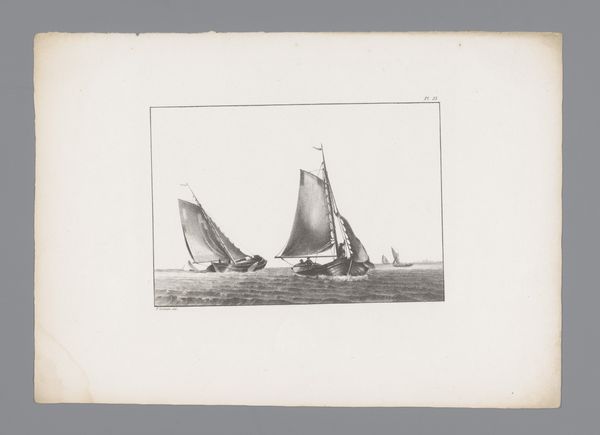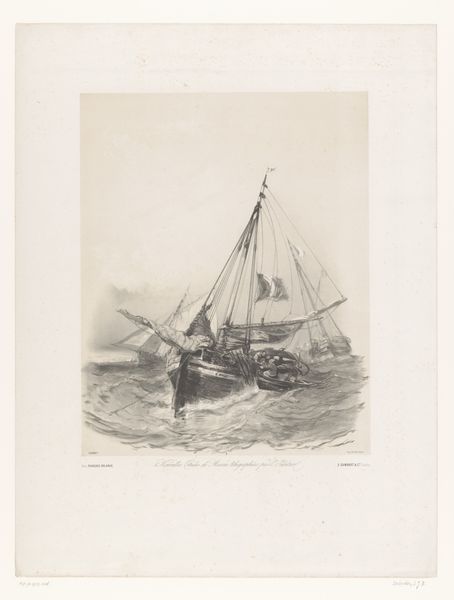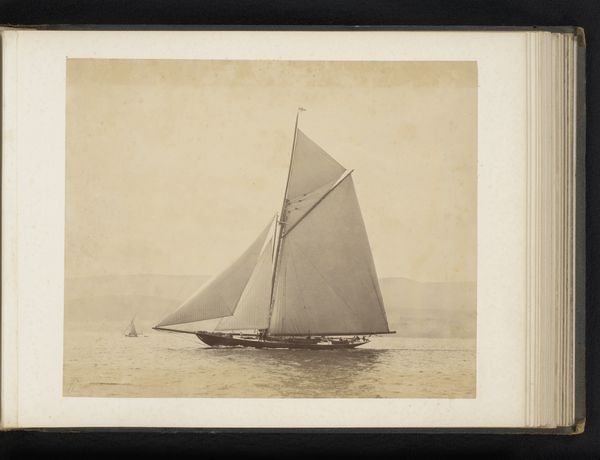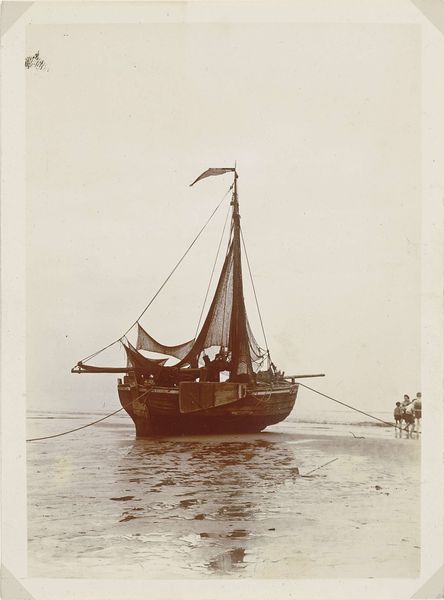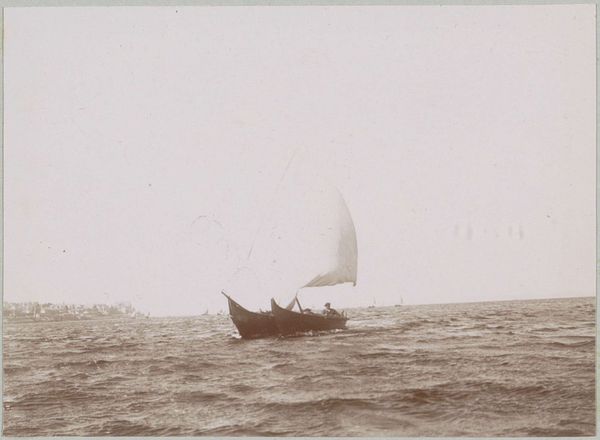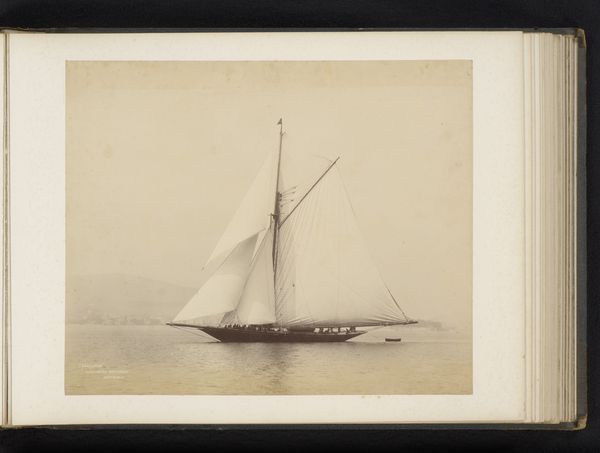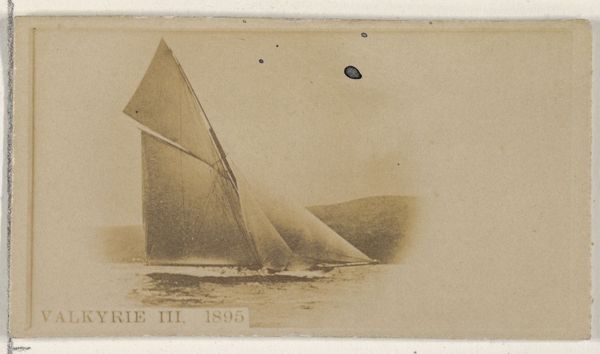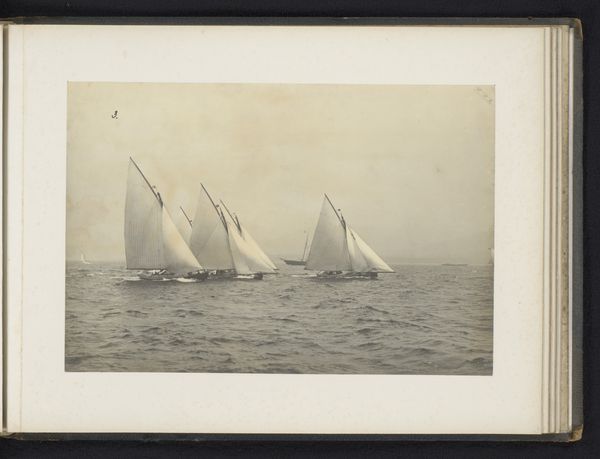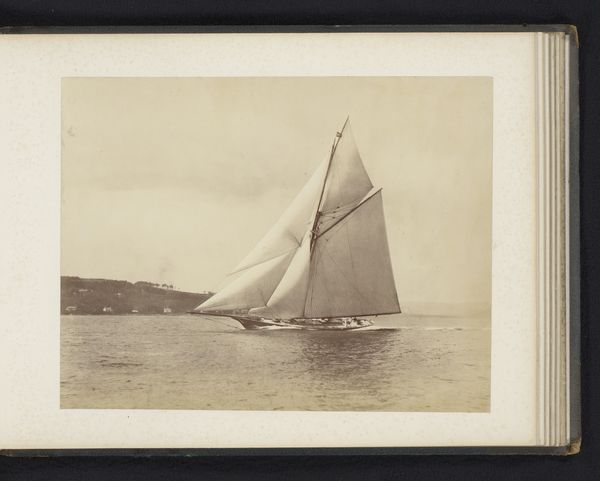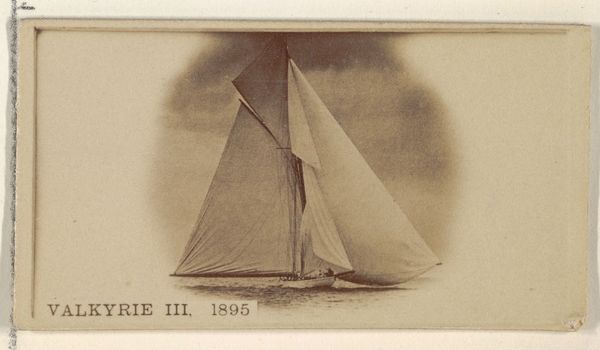
print, photography
#
pictorialism
# print
#
landscape
#
photography
#
realism
Dimensions: height 90 mm, width 119 mm
Copyright: Rijks Museum: Open Domain
Curator: Before us, we have Willem Frederik Piek Jr.'s photograph, "Zeilschip op de Oostzee, uitzicht vanaf een passagiersschip," created between 1889 and 1893. It's a print rendered with such detail; it almost captures the briny tang of the sea air. Editor: The materiality speaks to me—I see it as an artifact of a very specific era. This is photographic paper documenting both industrial seafaring and the labor of early photographic printing. Curator: Indeed. And formally, observe how the rounded border constrains the boundless sea. The sailboat becomes a study in contrasts; its dark sails a graphic counterpoint to the water’s frothy highlights. There’s a clear sense of depth, with receding vessels in the background creating visual planes, drawing the eye into the composition's core. Editor: Let's not ignore how such images were often circulated and consumed. Prints such as these would function almost like postcards, a record of transit but also evidence of trade. It makes me wonder what lives intersected in the image’s making—the labor of the crew, the ship manufacturers, and those printing and selling this photograph. Curator: Good point! Furthermore, the print employs soft focus, consistent with Pictorialist style of that time, thus imbuing a sense of dreamy nostalgia and softening realism’s often-stark edges. Piek subtly alters our perception through purely photographic techniques. Editor: And the technology itself dictates the aesthetic, to some extent. The choices are determined by what could actually be produced at that time, by the equipment available, but this then leads to these beautiful, ethereal landscapes. I find it fascinating. Curator: I agree. Its hazy treatment of light contributes significantly to its melancholy mood; light is being deployed less for definition and more to provoke emotion. It creates, through contrast and tone, something almost dreamlike, reflective, and, yet... Editor: Grounded in the gritty, real world, documented here for posterity in photographic paper and silver salts. A beautiful meeting of processes and art, isn’t it? Curator: It is. And what better encapsulation of how both realms – art and process – truly speak to one another. Editor: Exactly; now, if only the sea were truly silent!
Comments
No comments
Be the first to comment and join the conversation on the ultimate creative platform.

